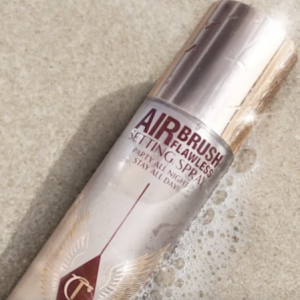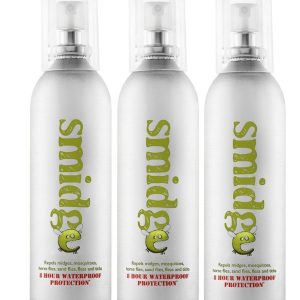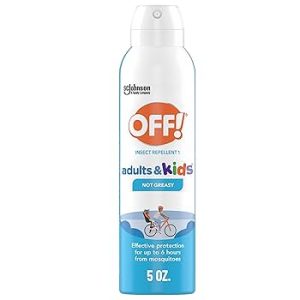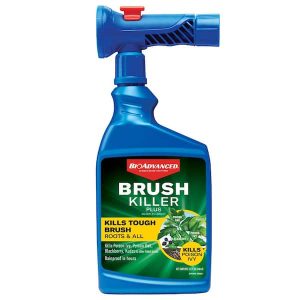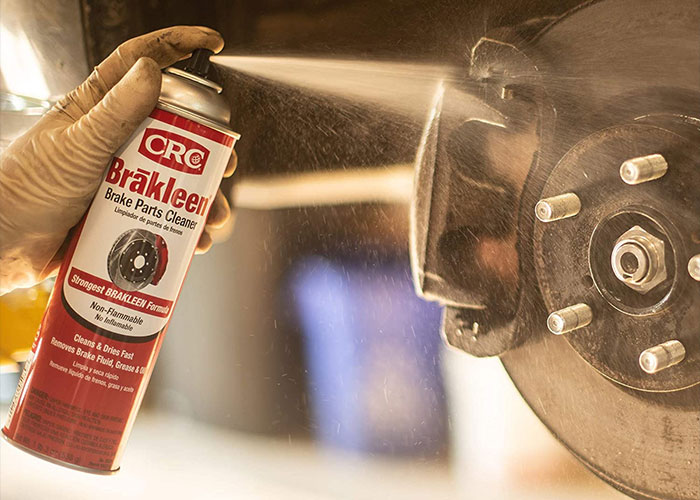
Maintaining your vehicle’s braking system is paramount for safety and performance. While aerosol cans of brake cleaner have been a go-to for decades, a more efficient, economical, and environmentally friendly solution is gaining traction: the brake cleaner sprayer. This guide dives deep into everything you need to know about this indispensable tool, from its benefits to advanced usage techniques, ensuring your automotive cleaning tasks are tackled with precision and expertise.
Why a Dedicated Brake Cleaner Sprayer is Essential for Your Garage
Opting for a dedicated brake cleaner sprayer offers significant advantages over traditional aerosol cans. It’s not just about cleaning; it’s about control, cost-efficiency, and conscious consumption. Understanding these benefits can transform your approach to vehicle maintenance.
Benefits Over Aerosol Cans
Aerosol cans are convenient for quick jobs, but they come with limitations. A refillable brake cleaner sprayer, on the other hand, allows you to buy brake cleaner in bulk, which is significantly cheaper per ounce. This economic benefit accumulates rapidly, especially if you frequently work on vehicles. Furthermore, aerosol cans often don’t fully empty, leaving product wasted. Sprayers ensure you use every drop.
Safety Considerations
Safety is a primary concern when dealing with automotive chemicals. Aerosol cans propel chemicals with propellants, often leading to wider dispersion and increased inhalation risk. A brake cleaner sprayer provides a more controlled stream, minimizing airborne particles and reducing your exposure to volatile organic compounds (VOCs) and other harsh fumes. This precision translates to a safer working environment.
Efficiency and Thoroughness
The consistent pressure and directed spray from a brake cleaner sprayer ensure more thorough cleaning. You can target grime and residue precisely, flushing contaminants away without excessive overspray. This efficiency means less wasted product and a cleaner, more effective job on brake components, engine parts, or other soiled surfaces.
Types of Brake Cleaner Sprayers: Finding Your Perfect Tool
Just like brake cleaners themselves, sprayers come in various forms, each suited for different needs and preferences. Choosing the right brake cleaner sprayer depends on the volume of work, desired pressure, and overall convenience you seek.
Pressure Pump Sprayers
These are the most common and accessible types of brake cleaner sprayers. They operate by manually pumping a handle to build air pressure inside the reservoir, which then expels the liquid. They are highly versatile, relatively inexpensive, and suitable for most DIY enthusiasts and smaller workshops. Their simplicity makes them easy to maintain and troubleshoot.
Compressed Air Sprayers
For those with an air compressor, dedicated compressed air-powered brake cleaner sprayers offer superior performance. They connect directly to your air line, providing consistent and powerful pressure without manual pumping. This makes cleaning faster and less fatiguing, ideal for busy professional environments or extensive projects. However, they require an existing air compressor setup.
Battery-Powered Sprayers
The latest innovation in spray technology, battery-powered brake cleaner sprayers combine the convenience of consistent pressure with portability. Equipped with a small electric pump, they deliver a continuous, even spray with the push of a button. While often more expensive upfront, they offer unmatched ease of use and are excellent for those seeking efficiency without the need for an air compressor.
Material Considerations
Regardless of the type, the material construction of your brake cleaner sprayer is crucial. It must be made from chemical-resistant plastics or metals to prevent degradation from harsh brake cleaners and other solvents. Look for durable seals and nozzles designed to withstand corrosive liquids, ensuring longevity and reliable performance.
How to Effectively Use a Brake Cleaner Sprayer for Optimal Results
Using a brake cleaner sprayer correctly is key to achieving the best cleaning results and ensuring safety. It involves more than just pointing and spraying; proper technique protects both you and the vehicle.
Step-by-Step Guide
-
Preparation is Key: Always ensure your vehicle is on a stable, level surface. Engage the parking brake and consider using jack stands for added safety if removing wheels. Gather all necessary personal protective equipment (PPE).
-
Fill the Sprayer: Carefully pour your chosen bulk brake cleaner into the brake cleaner sprayer reservoir. Do not overfill, as most sprayers require an air gap for pressure building. Securely close the cap or lid.
-
Build Pressure: If using a pump sprayer, actuate the pump handle until sufficient pressure is built. You’ll feel resistance, and the spray will become strong and consistent. For compressed air models, connect the air line.
-
Target and Apply: Direct the nozzle of the brake cleaner sprayer precisely at the brake components you wish to clean (calipers, rotors, pads, drums, springs). Spray generously to flush away brake dust, grease, and grime. Ensure good ventilation in your workspace.
-
Drying and Reassembly: Allow the cleaner to evaporate completely. Most brake cleaners are fast-drying. Once dry, inspect the components for any remaining residue. Reassemble your brakes, following manufacturer specifications, and perform a final check.
Safety Precautions
When operating a brake cleaner sprayer, always prioritize safety. Wear chemical-resistant gloves, eye protection (safety glasses or goggles), and a respirator to avoid inhaling fumes. Work in a well-ventilated area, preferably outdoors or in a garage with open doors and fans. Be mindful of overspray onto painted surfaces or plastic components that might be sensitive to harsh chemicals.
Best Practices
-
Targeted Cleaning: Use the adjustable nozzle on your brake cleaner sprayer to control the spray pattern. A fine stream is excellent for precision, while a wider mist can cover larger areas.
-
Avoid Sensitive Areas: Be cautious around rubber seals, plastic parts, or painted surfaces that might react poorly to aggressive brake cleaners. If unsure, test a small, inconspicuous area first.
-
Proper Disposal: Collect runoff if possible, especially if working with chlorinated brake cleaners, and dispose of it according to local environmental regulations.
Beyond Brakes: Versatile Applications for Your Refillable Sprayer
While its name suggests primary use for brakes, a refillable brake cleaner sprayer is a surprisingly versatile tool. Its ability to deliver a consistent, powerful stream of liquid makes it useful for a myriad of cleaning and degreasing tasks.
Degreasing Other Automotive Components
The same power that cleans brake dust can tackle grease and oil on other engine parts. Use your brake cleaner sprayer to degrease engine blocks, transmission cases, suspension components, or even heavily soiled axles. It’s excellent for preparing surfaces for repair or painting, ensuring optimal adhesion and cleanliness.
Cleaning Tools and Equipment
Greasy wrenches, dirty engine stands, or oil-covered floor jacks can all benefit from a thorough cleaning. Load your brake cleaner sprayer with a suitable degreaser, and quickly blast away accumulated grime, keeping your workshop tidy and your tools in top condition. This extends the life of your equipment and improves efficiency.
Industrial and Household Uses
With appropriate cleaners, these sprayers can extend beyond automotive tasks. For example, a heavy-duty degreaser in the sprayer can clean industrial machinery, garage floors, or even prepare metal for welding. Some users even adapt them for specific household cleaning tasks that require precise application of strong cleaning agents (always ensure chemical compatibility and proper ventilation).
Choosing the Right Brake Cleaner for Your Sprayer
The effectiveness of your brake cleaner sprayer largely depends on the quality and type of brake cleaner you use. Understanding the differences between formulations is crucial for safety and optimal results.
Non-Chlorinated vs. Chlorinated
-
Non-Chlorinated Brake Cleaners: These are typically formulated with solvents like acetone, toluene, and methanol. They are fast-drying, leave no residue, and are generally safer for sensitive components like rubber and plastics compared to their chlorinated counterparts. They are also less toxic to inhale and are often preferred for environmental reasons. They tend to be slightly less aggressive at cutting through heavy grease but are widely available and very effective.
-
Chlorinated Brake Cleaners: Containing chlorinated solvents like tetrachloroethylene or perchloroethylene, these cleaners are extremely powerful at dissolving grease, oil, and brake fluid. They are non-flammable, which can be an advantage in certain industrial settings. However, they are highly toxic, produce harmful fumes, and can damage rubber and plastic components. Due to environmental and health concerns, their use is restricted in many regions.
Biodegradable Options
As environmental awareness grows, manufacturers are developing more eco-friendly and biodegradable brake cleaner formulations. These cleaners use less harsh solvents, relying on advanced surfactant technologies to break down contaminants. While they might require slightly more dwell time or agitation, they offer a responsible choice for those concerned about their environmental footprint. Always check for certifications or claims of biodegradability.
Compatibility with Sprayer Materials
Always ensure the brake cleaner you choose is compatible with the internal components and seals of your brake cleaner sprayer. Most modern sprayers are designed to handle common non-chlorinated brake cleaners. If using specialized or industrial solvents, double-check the sprayer’s specifications or consult the manufacturer to prevent damage to seals or the reservoir.
Maintenance and Longevity of Your Brake Cleaner Sprayer
To ensure your brake cleaner sprayer remains a reliable tool for years to come, proper maintenance is crucial. Neglecting it can lead to clogs, loss of pressure, and ultimately, premature failure.
Cleaning After Use
After each use, especially if you’ve used a particularly aggressive cleaner or if the sprayer will sit idle for a while, it’s good practice to clean it. Empty any remaining cleaner. Then, fill the reservoir with warm water (and a mild detergent if the cleaner was oily) and spray it through the nozzle until the water runs clear. This flushes out residues that can cause clogs or damage seals.
Proper Storage
Store your brake cleaner sprayer in a clean, dry place away from direct sunlight and extreme temperatures. For pump sprayers, release any residual pressure before storing. This prevents undue stress on seals and extends their lifespan. Store it upright to prevent leaks.
Troubleshooting Common Issues
-
Loss of Pressure: This is often due to a loose seal or a worn O-ring. Inspect all seals, especially around the pump mechanism and the nozzle connection. Replace worn O-rings as needed.
-
Clogging: If the nozzle delivers a weak or erratic spray, it’s likely clogged. Disassemble the nozzle and clean it thoroughly. A small needle or wire can help dislodge stubborn debris. Always filter your bulk cleaner if you suspect contaminants.
-
Leaking: Leaks usually indicate a damaged or improperly seated seal. Disassemble the affected area, inspect the seals for cracks or deformation, and replace them.
Case Study: The Cost Savings of Switching to a Reusable Brake Cleaner Sprayer System
Let’s illustrate the financial benefits of adopting a brake cleaner sprayer system with a hypothetical scenario for a busy DIY enthusiast or a small automotive repair shop.
Scenario: A DIY enthusiast performs brake jobs quarterly on two family vehicles and various other small projects, consuming approximately 12 aerosol cans of brake cleaner per year.
Current Cost (Aerosol Cans):
-
Average cost per 14-oz aerosol can: $5.00
-
Total annual cost: 12 cans *
5.00/can=∗∗5.00/can = **60.00**
Proposed System (Brake Cleaner Sprayer + Bulk Cleaner):
-
Initial investment for a quality brake cleaner sprayer: $30.00 – $50.00 (Let’s assume $40.00)
-
Cost per gallon of bulk non-chlorinated brake cleaner: $20.00 – $30.00 (Let’s assume $25.00)
-
A gallon is roughly 128 oz, equivalent to about nine 14-oz aerosol cans.
-
Annual consumption equivalent: 1.33 gallons (12 cans / 9 cans/gallon)
-
Annual bulk cleaner cost: 1.33 gallons *
25.00/gallon=∗∗25.00/gallon = **33.25**
Cost Comparison:
| Category | Annual Cost (Aerosol) | Annual Cost (Sprayer System) | Savings (Year 1) | Ongoing Savings (Subsequent Years) |
| Brake Cleaner Product | $60.00 | $33.25 | $26.75 | |
| Sprayer Investment | N/A | $40.00 | N/A | |
| Total Year 1 | $60.00 | $73.25 | -$13.25 | |
| Total Subsequent Years | $60.00 | $33.25 | $26.75 |
Analysis:
In the first year, the initial investment in the brake cleaner sprayer slightly offsets the savings on the product. However, from the second year onwards, the annual savings are significant, accumulating to $26.75 per year for this relatively modest usage. For professional shops or high-volume DIYers, these savings would be exponentially higher.
Environmental Benefits:
Beyond the financial aspect, switching to a reusable brake cleaner sprayer dramatically reduces waste. Fewer aerosol cans end up in landfills, contributing to a more sustainable automotive practice. This aligns with a growing global emphasis on reducing single-use products and minimizing environmental impact.
FAQs About Brake Cleaner Sprayers
Here are some frequently asked questions regarding the use and versatility of a brake cleaner sprayer.
Q: Can I put anything else in my brake cleaner sprayer?
A: Yes, many individuals use their brake cleaner sprayer for a variety of other automotive or general degreasing and cleaning tasks. Compatible liquids include general-purpose degreasers, wheel cleaners, and even some rust converters. However, always ensure the chemical is compatible with the sprayer’s materials to prevent damage. Never mix different chemicals without confirming their compatibility and safety.
Q: How often should I clean my brake system?
A: It’s generally recommended to inspect and clean your brake system during every tire rotation, which is typically every 5,000 to 7,500 miles. A thorough cleaning with your brake cleaner sprayer helps remove accumulated brake dust and grime, which can cause noise, reduce braking performance, and lead to premature wear of components.
Q: Are all brake cleaners safe for all vehicle types?
A: Most non-chlorinated brake cleaners are generally safe for modern vehicle components, including rubber and plastic seals, although it’s always wise to test in an inconspicuous area first. Chlorinated brake cleaners, while powerful, can be corrosive to certain plastics and rubbers and are highly toxic. Always read the product label for specific warnings and compatibilities. For an authoritative source on brake cleaner types and their uses, you might consult CRC Industries’ official site (Example Source Link).
Q: What safety gear do I need when using a brake cleaner sprayer?
A: When using a brake cleaner sprayer, always wear appropriate personal protective equipment (PPE). This includes chemical-resistant gloves (nitrile or neoprene are good choices), eye protection (safety glasses or goggles to prevent splashes), and a respirator to protect against inhaling harmful fumes, especially in enclosed spaces. Good ventilation is also essential.
Invest in Precision with Your Brake Cleaner Sprayer
The brake cleaner sprayer is more than just a tool; it’s an investment in the efficiency, safety, and longevity of your automotive maintenance practices. By providing precise application, reducing waste, and offering significant cost savings over time, it stands as a superior alternative to traditional aerosol cans. Whether you’re a seasoned mechanic or a dedicated DIY enthusiast, upgrading to a refillable brake cleaner sprayer system will streamline your cleaning tasks, improve your results, and contribute to a more sustainable approach to vehicle care. Make the switch today and experience the difference precision cleaning can make.
